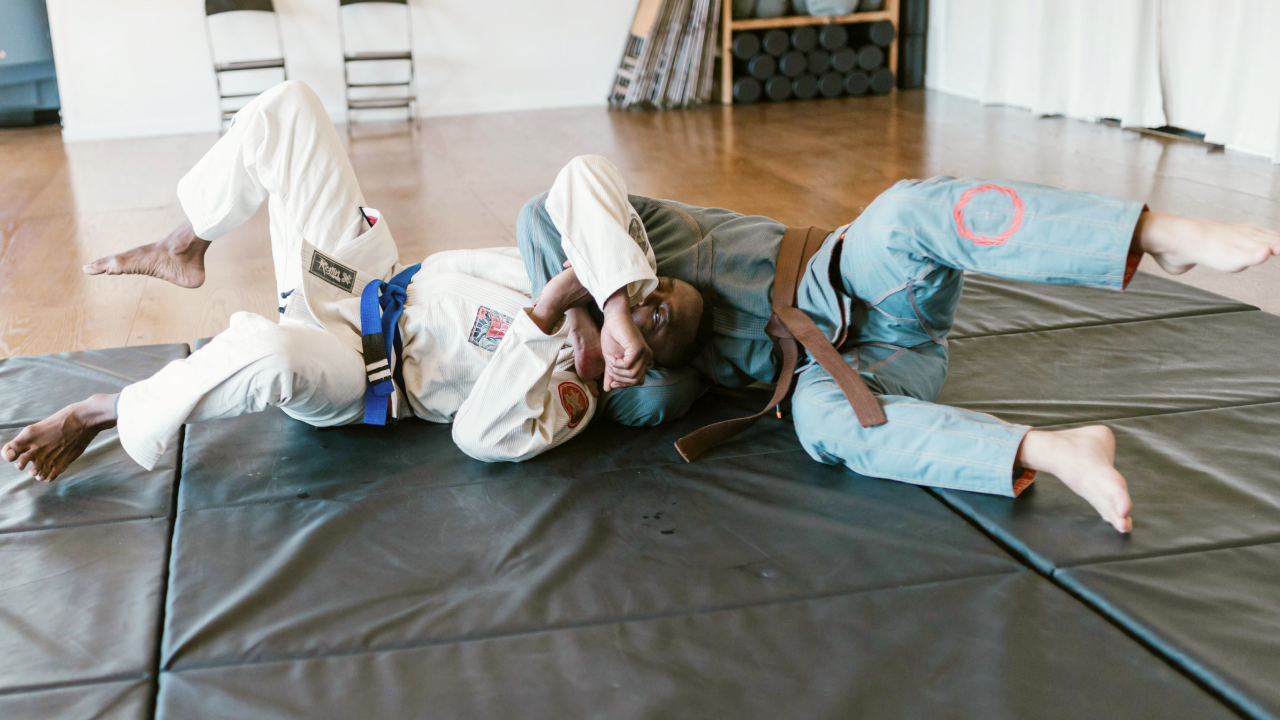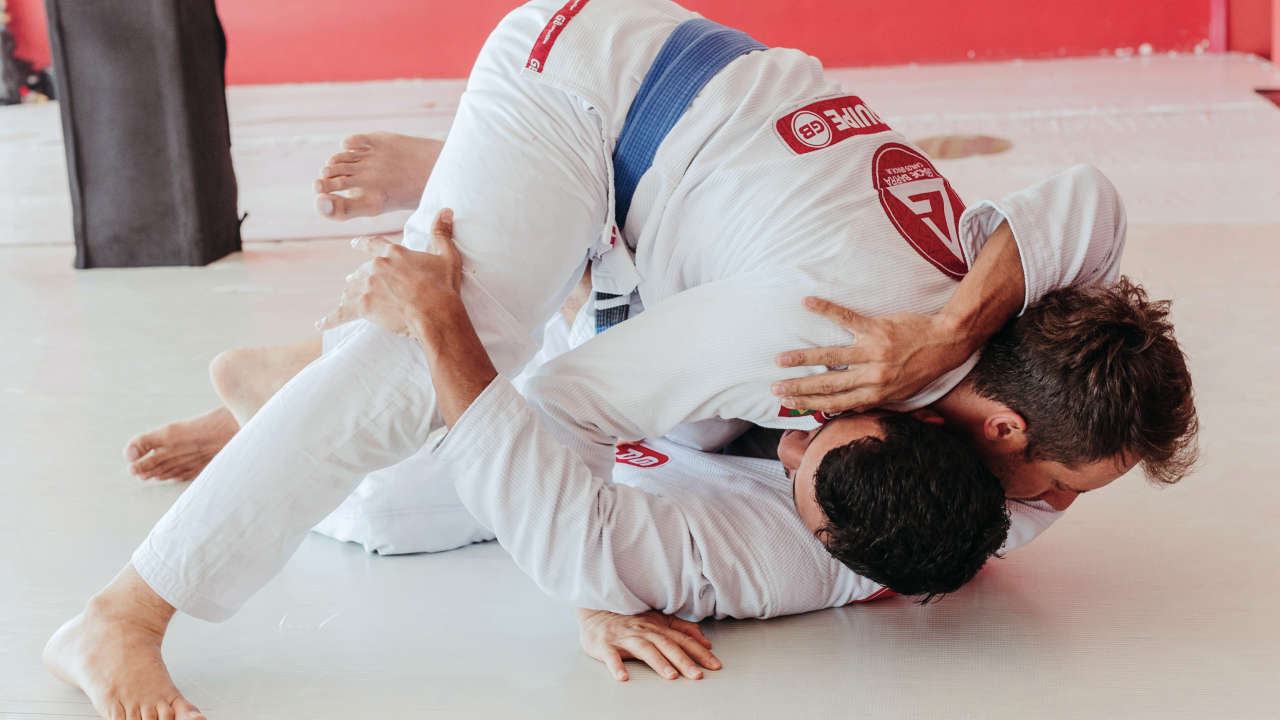Learning How to Train Jiu-Jitsu with Henry Akins
Matt Thornton, the founder of SBG International and one of the most well-respected jiu-jitsu coaches in the Pacific Northwest, recently sat down to interview Henry Akins. Henry has been a major figure in the jiu-jitsu community for decades. He was just the third American to receive his black belt from Rickson Gracie, arguably one of the best Brazilian jiu-jitsu fighters to ever live, and Henry has spent years sharing the wisdom that he learned from Rickson with students of jiu-jitsu around the world.
This blog post, the second in a three-part series, will focus on just some of the wisdom that Henry shares with Matt in the above video that really speaks to how he has trained throughout his life. We’ll cover what is meant by the phrases “invisible jiu-jitsu” and “hidden jiu-jitsu”, Henry’s experience training with Rickson, and how Henry stays on top of his game today. If you want to go back to read the first post from the series, you can find the link here.
Invisible Jiu-Jitsu and Hidden Jiu-Jitsu
“Invisible jiu-jitsu” is a term with a double meaning that Rickson uses to describe high-level jiu-jitsu. Henry’s take is slightly different, and he refers to it as “hidden jiu-jitsu.” Though they have different names, they share a common principle, which is that the better you become at executing certain techniques, the more you will understand how to make extremely subtle adjustments that a) may not be discernible with the naked eye and b) typically aren’t taught because it is something you have to feel out.
One of the most common examples with Rickson was weight distribution. When you shift your weight onto your opponent or use their own body mass as leverage against them, the movement itself may involve modifying the angle of your elbow or moving your foot an inch. However, the impact on your opponent can be devastating. For Rickson, his ability to be successful on the mat and make it look effortless was largely because he had an encyclopedic knowledge of these micro movements.
The reason these micro movements aren’t explicitly taught in class (and therefore are “hidden” or “invisible”) is because they are going to be different for each body type, and there are simply too many body types to systematically map all these minute movements out. This hidden or invisible jiu-jitsu is something that you have to experience and develop yourself.
Though these micro movements are difficult to explain with words, it is a lot easier to feel them when you are rolling with your instructor or someone who is more experienced than you. Luckily for Henry, he was approximately the same size as Rickson many years ago and he often served as Rickson’s Uke. This meant Rickson would demonstrate certain moves to the class using Henry as a partner, which is how he got to learn about Rickson’s invisible jiu-jitsu firsthand.

Training with Rickson
Rickson was also known for being able to break down seemingly complex problems quickly by using very simple ideas. According to Henry, he was training one day many years ago with a friend named John. At the time, Henry was a brown belt and John was a purple belt. John was also a very tall guy with long arms and legs who kept catching Henry in a triangle each time Henry tried to pass John’s guard.
Henry was clearly getting frustrated when Rickson walked up and said, “Guard passing is just weight distribution and angles.” He nudged Henry aside, slapped hands with John, and then passed his guard in maybe ten seconds. He stopped. They slapped his hands again, then Rickson passed his guard again. He then did it a third time. After the third time, Rickson walked off.
That changed Henry. He had always been so focused on executing a specific technique against a specific guard. What Rickson showed him was that you don’t need to rely on specific techniques once you’re good enough. You just need to understand the objective (pass your opponent’s guard), internalize the principles of jiu-jitsu (in this case weight distribution and angles), and then make adjustments to techniques to fit with the specifics of the situation.

Training at 48
Like a lot of people who are now middle aged, Henry does not train as consistently or as rigorously as he once did. As the saying goes, life gets in the way.
This may sound familiar to a lot of people who may have trained four or five days per week in their twenties and into their thirties, but stopped coming to classes once they got married, had kids, and became more career- and family-oriented. It can be difficult to come back, especially if you’ve noticed that your technique is not as sharp as it once was or that you don’t have the endurance that you once did.
Even someone like Henry notices these kinds of changes when he comes back to the gym after spending time away, but he has found ways to stay at the top of his game. The first thing he focuses on after a break in training is getting his timing back and endurance. This typically involves fast-paced flow rolling for 45 minutes or so, which is a great cardio workout that also gives him a chance to sharpen his reflexes. After a month or so of regular training this way, he’ll then graduate into flow rolling where he is not really going for submissions. Instead, the goal is to let the positions change, so that he gets the opportunity to practice escapes, defense, and establishing and maintaining dominance.
It's important to remember that training jiu-jitsu is just like riding a bike. You may be a little rusty when you come back, but the muscle memory is there and tends to return with effort and consistency.

